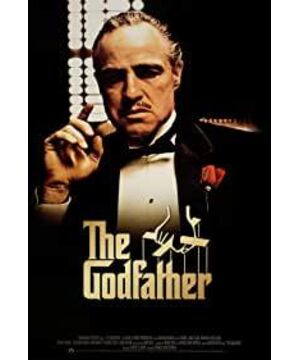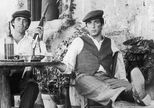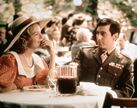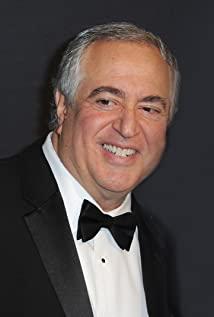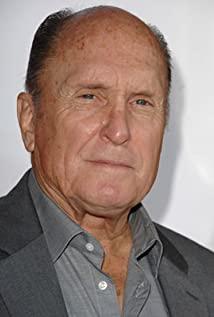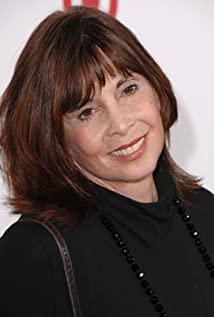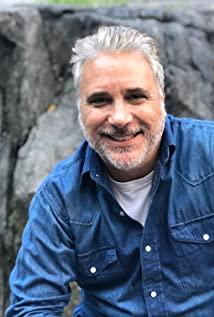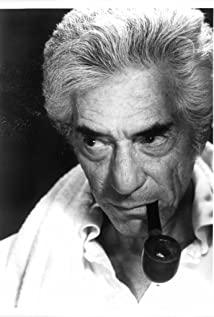Then still admired. If there is really a beginning of the best B movie in history, this is absolutely my part.
For epic movies like "The Godfather", the huge story structure, the complicated relationship between characters, and the many plot starting points all need to be established in the first act to lay a solid foundation for the subsequent narrative; in this limited time The pursuit of infinite space inside, I think, as long as you can put all the relevant content in without being bloated, it is already quite a realm; you can also sort out the context, concise and complex in one paragraph, only the master's great skill can Do it.
Why are so many related details in Coppola's hands as if they were the answer?
After all, I think he is telling a story.
Tell stories, abandon redundant technical means, and tell stories in a down-to-earth manner.
This kind of unpretentiousness should also be one of the qualities pursued by epic.
The narrative begins with Bonassala asking for help from the godfather Corleone. Starting from the close-up of his monologue, the camera slowly backed away, and the back of the godfather appeared. He waved to the people around him to give the angry Bonassala a glass of wine. An extremely calm opening. At first I thought it was just a simple zoom lens. Later, in the commentary track, I heard Coppola mention that it was a post-processing effect, and I remembered that this movie was born in the early 1970s. .
This line is quite exciting. The highlight first lies in the form. The commentary Ricoppola also specifically mentioned this point. He said that it was specially added in accordance with the proposal of others when writing the script, and deliberately imitated his Oscar-winning "Barton". In General, the film begins with a lengthy speech by Patton under the American flag.
In terms of content, this paragraph also contains rich images. First of all, this character explains the background of the Corleone family, the rule-makers that exist outside the law, a rule that pursues fairness, and the status of the family: the identity of the setter and the enforcer. It points out the story or two things on which the people told in the story depend for survival: one is rules, and the other is fairness; this is also the principle of Corleone’s life and safety, and the subsequent conflicts of the story are contained in these two In the contradiction posed by principles. Secondly, it explains one of the contrasting elements contained in the theme of the story, the American Dream. An immigrant realizes his American dream, but in a blink of an eye, he finds that everything is not as good as he imagined. He must return to the world he has abandoned to find comfort. The existence of this element also constitutes an extremely important reference in the relationship between Corleone and Mike.
In the subsequent dialogue, Corleone went from refusal to accepting, advancing and retreating well, completely in control of the other party. In addition to regaining what he wanted (respect instead of money), he also included revenge into a category of self-confidence. Here also reveals another extremely important element of the story: business. This is a bargaining bargaining with a businessman's wrist. The subtlety lies in Corleone's success in obtaining the maximum benefit for himself under a restricted premise.
This restriction is completed in two parts. First, it is stated in the dialogue that this is the day of Corleone’s daughter’s wedding, and then through the mouth of Corleone’s adopted son, Tom, the other part is explained: Sicilians will not refuse any request on the day of their daughter’s marriage. . Therefore, on this special day, Corleone will inevitably unconditionally agree to all requests for help, including Bauna Sala, but even under such passive conditions, he can still get what he wants, his wrist This can be seen. Throughout the passage, Corleone met with four people in turn. Except for one for thanks, the other three were all asking for help. Through his different attitudes towards these four people and his different handling and arrangements for asking for help, his image has been clearly on paper.
This passage carefully portrays the character of Corleone. In the following story, through his encounters, the tragic nature of the story is expressed: "The king" is getting old, and the deterrent power of "king" is weakening. He insists Principles are no longer the norm for everyone; spread it out, and an era is beginning to pass away silently; in this context, in this age full of transitions, it is closely related to the history of the rise and fall of a family. , Some people walked to the front desk, others passed away sadly, or died of old age, or died suddenly. This is the root of the deep charm of "The Godfather", not only a gangster, but also a family history spanning several generations.
From this, the story turns into a cross-narrative, with Corleone receiving various people indoors for help, and the lively wedding scene on the other side. The light in the two scenes is a clear contrast, and the commentary audio track Ricoppola also confirmed this treatment; he also specifically mentioned a few piercing shots. In fact, as long as you pay attention to the contrast of the light and its direction in the two scenes, you will easily find the bug of one piercing lens, but the other piercing lens can use the plot content to explain the smoothness.
Pay attention to the different appearances of the characters in these two different scenes, their positions and their relationship with Corleone, their position in the family, and their position in the story. For example, Tom and Corleone's eldest son Sonny, as a family lawyer (military division), appeared with Corleone in the first scene. The other son, Fredo, appeared in a family photo. At first, he was not shot alone, suggesting his marginal status in the family business.
Let's take a closer look at how Coppola explained the respective images and personalities of Corleone's three biological sons.
The first is Sonny, who plays an important role in the family business. He and Corleone appeared at the same time, and appeared together in a group photo; after the group photo, he and Corleone received another gangster Basini. In this shot, Corleone and Basini occupy the center of the frame, and Sonny is in the background but facing the camera; then he flirts with a woman in a straw hat, then talks with his wife, and the dialogue expresses his wife’s dissatisfaction; then he takes him with him. Two hands came down to the yard, where the FBI was copying Bin’s license plate. He was extremely dissatisfied and helpless. He spat on the spy’s certificate to vent his anger. When he returned to the house, he snatched a paparazzi’s camera and threw it on the ground. Throwing down a few banknotes; then he took time to have an affair with a woman wearing a straw hat on the second floor; when he came to Corleone again, he was questioned by his father, the content was related to his family and his wife; this is also Corleone’s most important relationship .
Followed by Fredo, he appeared for the first time when taking a family photo, but at the edge of the frame; later when his father met with Basini, but at the edge of the frame and facing away from the camera; he did not appear again until Mike appeared. , And occupy the center of the picture for the first time. It is the first time to emphasize his relationship with Mike. His attitude towards Mike's girlfriend also reveals part of his character.
Finally, Mike, this is the number one character throughout the story. His appearance is different from everyone else, and Coppola uses a circumflex process. First, when taking a family photo, Corleone refused to take pictures because he did not show up; Tom and Sonny’s conversation implied that Mike and them had a different status in his father's mind; Leon was looking out of the window; Mike and Kay sat down, and their conversation involved Luca and Johnny. At this time, Mike spoke completely about them and his family with a bystander and slightly disdainful attitude. , Family relationship; midway Tom and Fredo came over to hug and greet Mike. Mike's character is not particularly portrayed in this scene, but he is first placed in the position of a bystander, in contrast to Sonny's importance and Fredo's marginality.
In Corleone's family, in addition to the above three, the most important role is the adopted son Tom. This is reflected in his playing time, participation in games, interaction with Corleone, and Mike's side account, as well as detailed characterization. After spreading out, the characters are Corleone's wife, daughter and son-in-law. They all have more shots to explain, but there is no detailed portrayal. This kind of treatment is also quite consideration, because they will exist in the story for a long time, there is ample space to shape them, and there is no need to concentrate on the opening part.
In the gang, the other two important characters: Fat Klimansa and Thin Tessio also received the same number of shots, and focused on characterization, which contrasted with their responsibilities and behaviors in later stories. It also echoes Corleone's understanding of them. Beyond that is Klimansha's subordinate, Pauli. In addition to getting a separate confession lens, he also has a simple image shaping. Another important role is Luca, who made a special trip to thank Corleone. He got more shots and repeated the same dialogue several times to reveal the character of the character who is strong outside and inside; Mike telling Luca’s story to Kay is a very good one. Cleverly foreshadowing, he gave Corleone’s solution to the problem to give the audience a fixed impression, but then after Tom’s solution to Johnny’s problem was blocked, he used a completely different method, and the differentiation further showed that Ke The strength of Lyon also brings a strong emotional impact to the audience.
In addition to these two relationship circles, there are two other relationship circles. The characters in the first relationship circle are mainly people of various colors who ask for help from the godfather, including the funeral home owner Bao Nasala, the singer Johnny, and the cake master. This relationship circle is used to set off Corleone's image of the godfather and his principles: There are no enemies in the absolute sense, only friends, only business. The final circle of relationships is Corleone's social power and his relationship with political figures. These characters did not appear on the scene, and they were completely expressed from the side. One was the non-local councillors mentioned when solving the problem of the cake maker; the other was the councillors and judges mentioned by Tom when he read the congratulatory letter. This relationship circle has a broader social influence, which forms a strong contrast with the previous one. It is also a very important reference in the father-son relationship between Corleone and Mike.
In this movie, Coppola pays special attention to the repeated appearance of cutscene characters. For example, characters such as Poly and photographers are dispensable in the relationship between the characters, but Coppola still cleverly gives them an important role. For example, in the following episodes, Pauli appeared many times when Corleone was assassinated; the photographer only appeared in two scenes, but the image of Basini was highlighted from the side. When he had no intention of taking pictures of Basini’s table of people, Basini asked his men to take away his negatives and tear them up, revealing that Basini was a cautious and restrained person. He knew that this was a photographer hired by the Corleone family, so he did not take any further or malicious actions. It happened to be in stark contrast to Sonny's behavior when he treated the paparazzi. Even the cake chef who is completely subordinate to the curry coffee position has echoes and injects a rare sense of humor into the story. Bauna Sala, who appeared in the opening scene, appeared again when the story changed. As an important witness to the rise and fall of the Corleone family, it became an important footnote to the story's sense of fate.
In this paragraph, we have successfully completed the setting of the story structure, the appearance of relevant characters and the shaping of the image. The last task is to lay the clues for the subsequent plot. Compared with dealing with the details of the previous two, Coppola handled this task easily and effortlessly. The last part of this paragraph, that is, after Johnny asks for help and leaves, Corleone asks Tom if there is anything left. Tom tells about the talks with Solasso. Corleone said that when he came back from California to discuss it, Tom surprised himself. There has never been such a trip, Corleone said to let him solve Johnny's troubles.
The "three" repetition is used here, the minimum number of times that can show the greatest effect. In response to requests from different guests, Corleone arranged for the corresponding person to handle the incident depending on the nature of the incident. Here, Tom was arranged to handle Johnny's affairs in person, showing his trust in Tom's abilities and the importance he attaches to Johnny, his godson. So far all the tasks of the prologue have been completed, and this paragraph has come to an end.
The final group photo is a metaphor. It represents the last glorious moment of the family led by "King Corleone", and is the starting point for the family's decline.
Back to the topic at the beginning, in fact, technology is not useless. Photographer Gordon Williams also contributed a lot to this scene, especially the low-key lighting.
But what’s interesting is that in the materials I’ve read, Coppola was still a small role in the filming of "The Godfather." The story is not enthusiastic, only because of economic difficulties, Lucas persuaded him to take over the job. When the original novel sold unexpectedly, "The Godfather" also received Paramount's attention, and Coppola became the most insignificant character. He said that he is facing the fate of being replaced at any time. The most likely replacement is Ilya Kazan. He is regarded as the most suitable person who is good at handling the most difficult Marlon Brando. Ironically, he highly recommended it at the beginning. It is Coppola herself who plays the godfather of Marlon Brando. Under this circumstance, it is said that everyone in the crew is not very good at Coppola, which naturally includes Gordon Williams.
There are only two days in Paramount’s plan to shoot the wedding, and Coppola can’t buy more time and can only simplify it because of complexity. There are too many regrets in this scene. This is the movie. Once printed, there is no way to change it. Perhaps this is the charm of the shortcomings. But this does not affect the super charm of this scene in the slightest. The only reason is that a right person has done a right thing at the right time.
Regarding this film, two other names must be mentioned, the original author Mario Puzo, who rewritten the script with Coppola and is also Coppola's most staunch supporter. The other person is Robert Tang, who was later invited by Paramount to rewrite the script and contributed some of the most wonderful opponent scenes in the film. This person is said to be unable to control the structure, but has an unparalleled talent for controlling the details.
View more about The Godfather reviews


